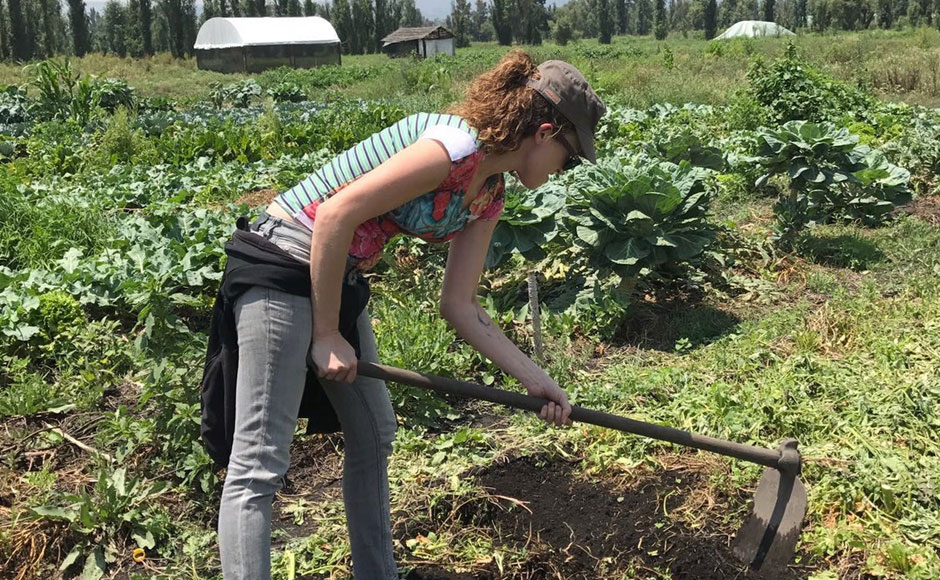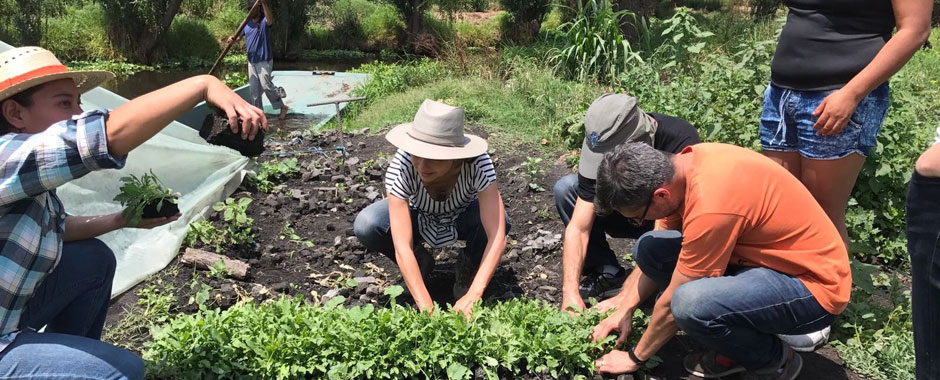In the wetlands of Xochimilco in Mexico, farming is carried out in a system going back to Mesoamerican times, in chinampas – rectangular floating fields growing crops on a shallow lake. The area is changing rapidly with competing pressures from farming, urbanization and pollution, and we’ve been exploring how local people can respond to this change using a T-Lab, a facilitated process to develop innovations together with a diverse group of people.
This past week our T-lab team (plus a couple of T-lab participants) visited the chinampas of one of our T-lab participants, Dario. Dario’s wife met us where the concrete of Mexico City meets the water of the wetland and we proceeded by boat to the chinampa.
This urban wetland system, the last remnant of the complex lacustrine system of wetlands in the Basin of Mexico, has a long cultural and land use change history. We wound in and around the canals of the wetland- surrounded by birds of all kinds swooping down over the canal, perched subtly on lily pads, and bobbing in and out of the water to snag something down below.
When we arrived, we were put to work (though we were probably more trouble than of use…)! We transplanted arugula, helped turn over the soil in a bed (the smoothest, most pliable soil I have ever worked with), cooed at the two-week-old calf, and learned to pull soil from the canal for use on the chinampa. Only through working with the soil, with the plants, and with others does one come to truly sense the essence of the chinampa: an essence not of market production, but of a culture of farming, of farm community, of coexistence, of aesthetics, and of self-sufficiency.

Seeds are saved, soil is dredged from the bottom of the canals to start seedlings, beds for planting are made from sweat and a hoe, water comes from above (rain) and below (canals), and neighbors come by without warning or invitation but are met with welcome.
Perfection and pressure
Based on the standards of aesthetics that the market has created, the food that is grown is imperfect – insects can have a bit of the share before the harvest – but it’s perfect in another sense, that of coexistence. A bit for us, a bit for the insects, as long as we can both persist together.
Yet the chinampas are faced with another relationship that is putting pressure on their ability to persist: the relationship they have to the city. It’s a city that replaces water with concrete, and values the products and the place of the chinampas in a way that doesn’t fit with the intentions upon which the system was originally built.
The city values a product in money, by different standards of perfection, and for different purpose. How can these values, standards, and purpose be realigned? How might the city value a product for its heritage, for its labor, for the care invested in its production, and for its sustainability?
The pathway to transform and re-align value systems is not clear, but without some kind of transformation, a business-as-usual scenario will continue to pour concrete.
More information
Find out more about the Pathways Network, which includes the research in Xochimilco.
